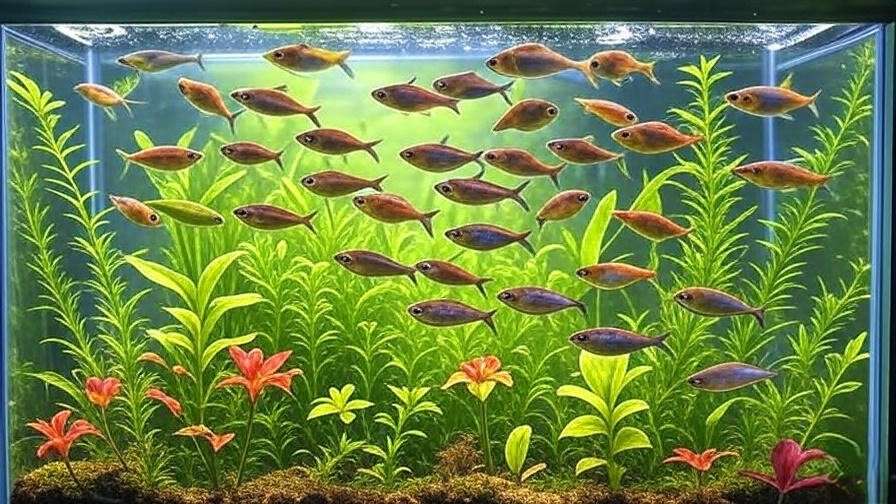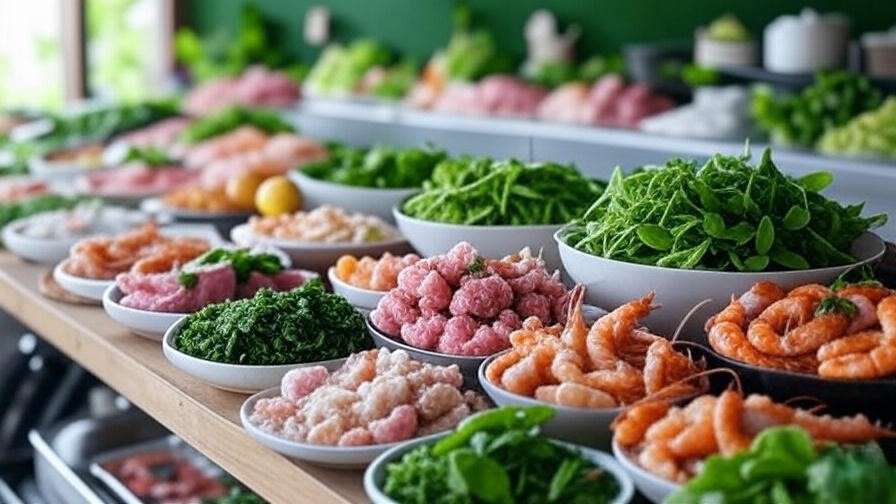Picture a dazzling aquarium where vibrant tetra species fish weave through lush green plants, their colors popping against a backdrop of thriving flora. This captivating scene isn’t just a dream—it’s achievable for aquarists passionate about plant-based ecosystems. Tetra species fish are the perfect choice for creating a sustainable, visually stunning planted tank that aligns with eco-conscious values. Whether you’re a beginner or a seasoned hobbyist, this guide dives deep into the top 10 tetra species, offering expert care tips and compatibility insights to ensure your aquarium thrives. From water parameters to plant-friendly tank mates, we’ll cover everything you need to build a vibrant, plant-based aquarium that’s both beautiful and sustainable.
Why Choose Tetra Species Fish for Plant-Based Aquariums?
Tetra species fish are a natural fit for planted aquariums, combining low maintenance with striking aesthetics. Their small size, peaceful temperament, and non-destructive behavior make them ideal companions for delicate live plants. Unlike larger fish that may uproot or damage foliage, tetras coexist harmoniously with plants like Java fern and Amazon sword, enhancing the tank’s natural beauty. Their schooling behavior creates dynamic, eye-catching displays, especially in densely planted environments where their colors contrast vividly with green leaves.
For aquarists committed to plant-based diets, tetras align perfectly with sustainable practices. These omnivorous fish thrive on high-quality plant-based foods like spirulina flakes, supplemented with occasional protein sources. According to research from the Journal of Fish Biology, tetras’ flexible diets make them adaptable to eco-friendly feeding regimens, reducing reliance on unsustainable fishmeal-based foods. This synergy between tetras and plant-based aquariums makes them a top choice for environmentally conscious hobbyists.
Understanding Tetra Species Fish
What Are Tetra Species Fish?
Tetra species fish belong to the Characidae family, primarily native to the freshwater rivers and streams of South America and parts of Africa. These small fish, typically 1-3 inches long, are known for their vibrant colors and peaceful demeanor. Their compact size and schooling nature make them a favorite among aquarists aiming to create lively, community-driven tanks. Tetras’ adaptability to various water conditions and their compatibility with live plants have cemented their popularity in the aquarium trade.
Why Tetras Are Popular
Tetra species fish are celebrated for their aesthetic appeal and ease of care. Their shimmering scales and synchronized swimming patterns create a mesmerizing effect, especially in planted tanks where plants amplify their colors. Compared to other tropical fish like cichlids, tetras require less intensive maintenance, making them suitable for beginners and experts alike. Insights from aquarist communities, such as The Planted Tank forum, highlight tetras’ ability to thrive in diverse setups, from nano tanks to large aquascapes, further boosting their appeal.
Top 10 Tetra Species Fish for Planted Aquariums
Selecting the right tetra species for your planted aquarium involves balancing visual appeal, care requirements, and plant compatibility. Below, we explore the top 10 tetra species, each chosen for their vibrant colors, ease of care, and harmony with live plants.
1. Neon Tetra (Paracheirodon innesi)
Description: Neon tetras are iconic for their electric blue backs and glowing red stripes, growing to about 1.5 inches. Their vivid colors make them a standout in any planted tank.
Care Tips: Maintain a pH of 6.0-7.0, temperature of 70-78°F, and soft water. A 10-gallon tank suits a school of 6-10 neons. Feed high-quality flakes, including plant-based options like spirulina, and occasional frozen brine shrimp.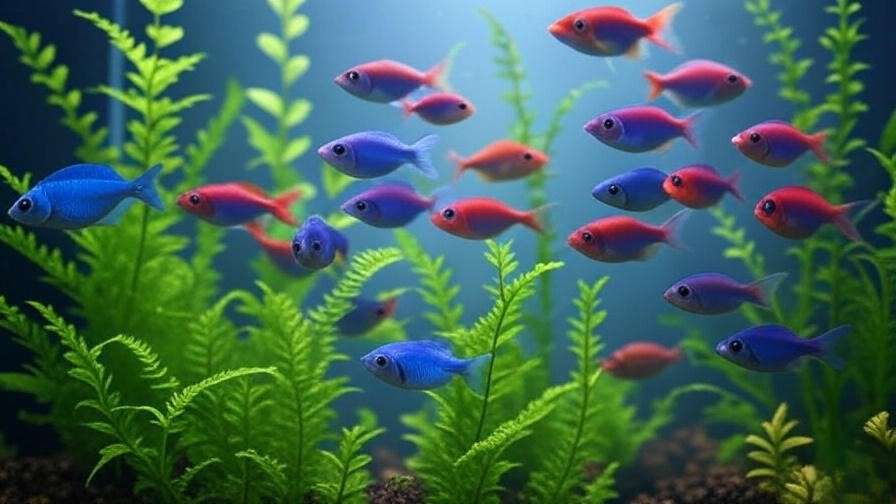
Plant Compatibility: Neon tetras thrive with low-maintenance plants like Java fern and Anubias, which provide cover without requiring intense lighting.
2. Cardinal Tetra (Paracheirodon axelrodi)
Description: Similar to neons but with bolder, more extensive red coloration, cardinals grow to 1.5 inches and add a striking contrast to green plants.
Care Tips: Cardinals prefer slightly acidic water (pH 5.5-6.8) and temperatures of 73-81°F. They’re more sensitive to water quality, so regular testing is crucial. A 15-gallon tank is ideal for a school of 8-12.
Plant Compatibility: They pair beautifully with dense plants like Amazon swords, which mimic their natural Amazonian habitat.
3. Ember Tetra (Hyphessobrycon amandae)
Description: Tiny at 0.8 inches, ember tetras boast a fiery orange hue that glows in planted tanks, making them perfect for nano setups.
Care Tips: Keep pH at 6.0-7.5 and temperature at 72-80°F. Their small size means a 5-gallon tank can house a school of 6-10. Feed micro-pellets and plant-based flakes.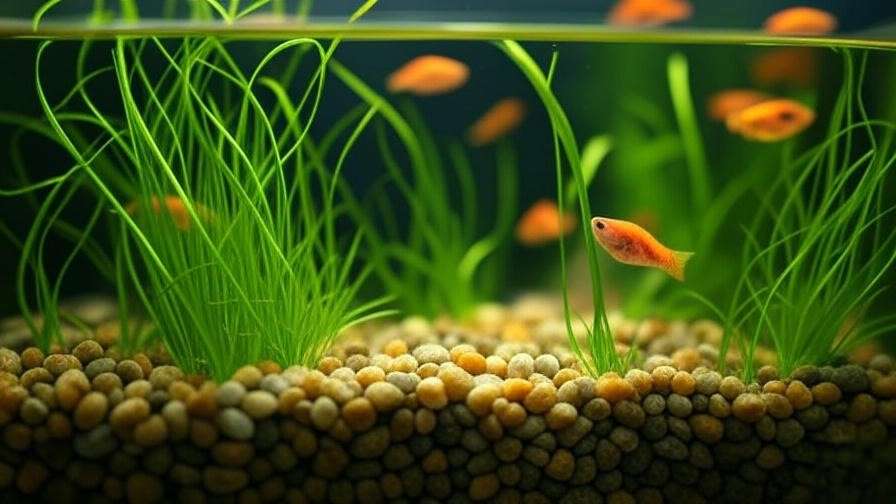
Plant Compatibility: Ember tetras shine with carpeting plants like dwarf hairgrass, creating a vibrant foreground display.
4. Black Neon Tetra (Hyphessobrycon herbertaxelrodi)
Description: With subtle black and silver stripes, black neon tetras offer a sophisticated look, growing to 1.5 inches.
Care Tips: Hardy and beginner-friendly, they tolerate a pH of 6.0-7.8 and temperatures of 70-79°F. A 10-gallon tank suits a school of 6-12. Feed a mix of flakes and small live foods.
Plant Compatibility: They complement tall plants like Vallisneria, which provide vertical structure without overcrowding.
5. Glowlight Tetra (Hemigrammus erythrozonus)
Description: Glowlight tetras feature a translucent body with a glowing orange line, reaching 1.5 inches.
Care Tips: Prefer dim lighting and a pH of 6.0-7.5, with temperatures of 74-80°F. A 10-gallon tank works for a school of 6-10. Feed plant-based flakes and occasional daphnia.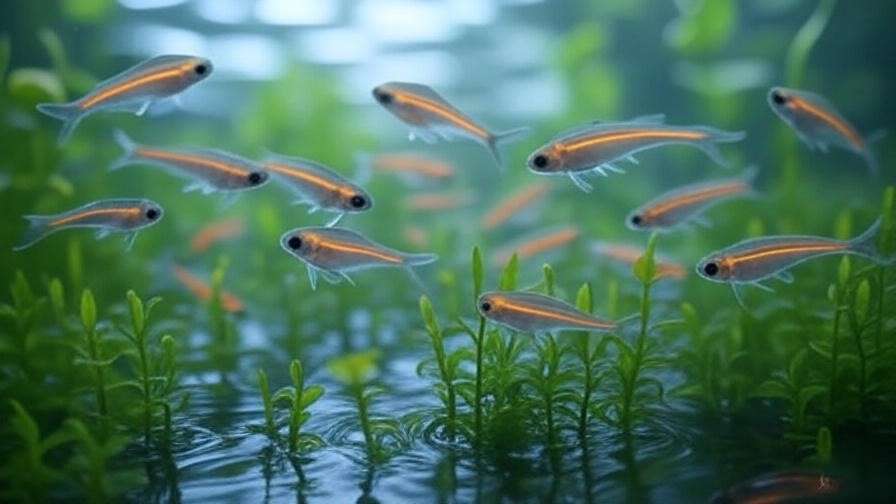
Plant Compatibility: They thrive with floating plants like water sprite, which diffuse light and create a natural ambiance.
6. Rummy Nose Tetra (Hemigrammus rhodostomus)
Description: Known for their red noses and black-and-white tails, rummy nose tetras grow to 2 inches and add a unique flair.
Care Tips: Sensitive to water changes, they need a stable pH of 6.0-7.0 and temperatures of 74-80°F. A 20-gallon tank is ideal for a school of 8-12. Feed high-quality flakes and frozen foods.
Plant Compatibility: They pair well with Cryptocoryne species, which offer dense cover and mimic their natural habitats.
7. Serpae Tetra (Hyphessobrycon eques)
Description: Bright red with a bold personality, serpae tetras grow to 1.5 inches and add energy to planted tanks.
Care Tips: Maintain a pH of 6.0-7.5 and temperatures of 72-79°F. They may nip fins, so choose peaceful tank mates. A 15-gallon tank suits a school of 6-10.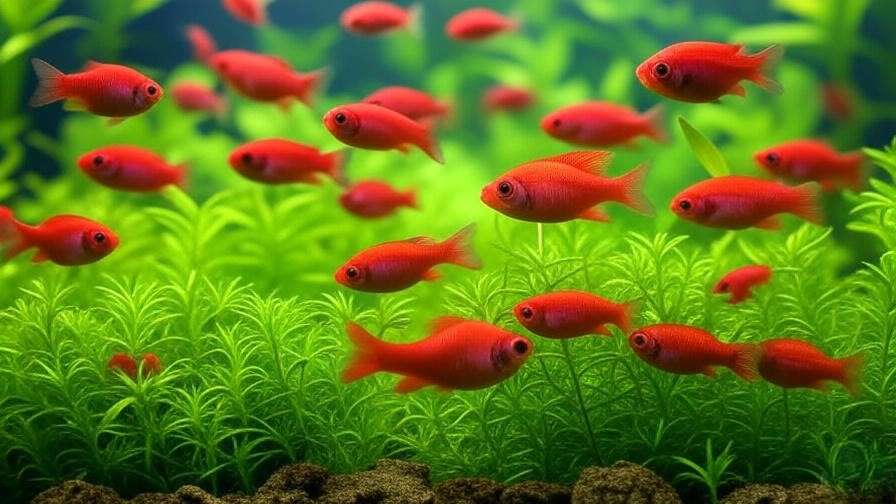
Plant Compatibility: Serpaes work with robust plants like Hygrophila, which withstand their active nature.
8. Diamond Tetra (Moenkhausia pittieri)
Description: Sparkling scales give diamond tetras a jewel-like appearance, growing to 2 inches.
Care Tips: Require a 20-gallon tank for a school of 6-10, with a pH of 6.5-7.5 and temperatures of 74-80°F. Feed a varied diet of flakes and live foods.
Plant Compatibility: They pair with broad-leaf plants like Echinodorus, enhancing their reflective scales.
9. Congo Tetra (Phenacogrammus interruptus)
Description: Larger at 3 inches, Congo tetras display rainbow colors, making them a centerpiece in planted tanks.
Care Tips: Need a 30-gallon tank, pH of 6.0-7.5, and temperatures of 73-80°F. Prefer strong water flow. Feed flakes and larger live foods like bloodworms.
Plant Compatibility: Complements tall, sturdy plants like Aponogeton, which match their active swimming style.
10. Lemon Tetra (Hyphessobrycon pulchripinnis)
Description: Bright yellow and peaceful, lemon tetras grow to 1.5 inches and are perfect for beginners.
Care Tips: Hardy, they tolerate a pH of 6.0-7.8 and temperatures of 70-78°F. A 10-gallon tank suits a school of 6-12. Feed plant-based flakes and small live foods.
Plant Compatibility: Thrive with fine-leaf plants like Rotala, creating a vibrant contrast.
Comparison Table:
| Species | Size (in) | pH Range | Temp (°F) | Tank Size (gal) | Plant Compatibility | Difficulty |
|---|---|---|---|---|---|---|
| Neon Tetra | 1.5 | 6.0-7.0 | 70-78 | 10+ | Java fern, Anubias | Easy |
| Cardinal Tetra | 1.5 | 5.5-6.8 | 73-81 | 15+ | Amazon sword | Moderate |
| Ember Tetra | 0.8 | 6.0-7.5 | 72-80 | 5+ | Dwarf hairgrass | Easy |
| Black Neon Tetra | 1.5 | 6.0-7.8 | 70-79 | 10+ | Vallisneria | Easy |
| Glowlight Tetra | 1.5 | 6.0-7.5 | 74-80 | 10+ | Water sprite | Easy |
| Rummy Nose Tetra | 2.0 | 6.0-7.0 | 74-80 | 20+ | Cryptocoryne | Moderate |
| Serpae Tetra | 1.5 | 6.0-7.5 | 72-79 | 15+ | Hygrophila | Moderate |
| Diamond Tetra | 2.0 | 6.5-7.5 | 74-80 | 20+ | Echinodorus | Moderate |
| Congo Tetra | 3.0 | 6.0-7.5 | 73-80 | 30+ | Aponogeton | Advanced |
| Lemon Tetra | 1.5 | 6.0-7.8 | 70-78 | 10+ | Rotala | Easy |
Setting Up a Plant-Based Aquarium for Tetras
Tank Requirements
A thriving tetra aquarium starts with the right setup. A 10-30 gallon tank suits most tetra species, depending on school size and tank mates. Use a gentle filter, like a sponge or hang-on-back model, to avoid disturbing delicate plants. Moderate to low lighting (1-2 watts per gallon) supports plant growth while keeping tetras comfortable, as many prefer shaded environments mimicking their natural habitats.
Substrate and Plants
Choose a nutrient-rich substrate, such as aqua soil or layered gravel with root tabs, to support rooted plants like Amazon swords. Recommended plants include:
- Java moss: Low-maintenance, ideal for covering rocks and driftwood.
- Anubias: Hardy, thrives in low light, perfect for beginners.
- Amazon sword: Creates a lush backdrop, suits larger tanks.
- Dwarf hairgrass: Carpeting plant for a vibrant foreground.
Example Setup: Layer 1-2 cm of aqua soil, plant Amazon swords at the back, add Java moss on driftwood, and spread dwarf hairgrass in the front for a balanced aquascape.
Water Parameters
Maintain a pH of 6.0-7.5, temperature of 72-80°F, and soft to moderately hard water (4-12 dGH). Test water weekly using a reliable kit, and perform 10-20% water changes to keep parameters stable. The American Aquarium Association recommends consistent monitoring to prevent stress in sensitive species like rummy nose tetras.
Feeding Tetra Species Fish in a Plant-Based Aquarium
Dietary Needs
Tetras are omnivorous, thriving on a varied diet of high-quality flakes, pellets, and occasional live or frozen foods. For plant-based aquarists, spirulina flakes and blanched vegetables like zucchini or spinach are excellent choices. According to a study in Aquaculture Nutrition, plant-based diets with spirulina support tetra growth and coloration without compromising health, aligning with sustainable fishkeeping.
Feeding Tips
Feed small amounts 2-3 times daily to prevent overfeeding, which can degrade water quality and harm plants. A pinch of flakes or a few micro-pellets per feeding is sufficient for a school of 6-10 tetras. Rotate between plant-based and protein-rich foods (e.g., freeze-dried daphnia) to ensure balanced nutrition.
Compatibility and Community Building
Ideal Tank Mates
Tetra species fish thrive in community tanks with peaceful, plant-friendly companions. Suitable tank mates include:
- Corydoras Catfish: Bottom-dwellers that clean up debris without disturbing plants.
- Otocinclus: Small algae-eaters that complement tetras’ peaceful nature.
- Dwarf Shrimp (e.g., Cherry Shrimp): Add color and help maintain a clean tank.
Avoid aggressive species like cichlids or large barbs, which may stress or nip at tetras. Insights from aquarist forums like The Planted Tank emphasize that tetras flourish in calm, non-competitive environments, ensuring a harmonious tank dynamic.
Plant-Friendly Tank Mates
Choosing tank mates that don’t damage plants is crucial for a plant-based aquarium. Nerite snails are an excellent choice, as they consume algae without uprooting or eating live plants. Unlike some snails, such as mystery snails, nerites are safe for delicate foliage like Java moss. Dwarf shrimp also graze on algae while leaving plants intact, making them ideal for maintaining a pristine aquascape.
Example: A 20-gallon tank with 10 neon tetras, 5 cherry shrimp, and 2 nerite snails creates a balanced ecosystem where plants and fish coexist seamlessly.
Schooling Requirements
Tetras are schooling fish, and keeping them in groups of at least 6-8 per species reduces stress and enhances their natural behavior. Larger schools (10-15) create stunning visual displays, especially in planted tanks where their synchronized movements contrast with green foliage. Research from FishBase.org notes that schooling reduces aggression and promotes health, as tetras feel secure in groups. For mixed tetra tanks, ensure each species has its own school to prevent hybrid shoaling, which can cause stress.
Expert Tip: Observe your tetras’ behavior. If they scatter or hide excessively, increase the school size or adjust tank conditions to reduce stress.
Common Challenges and Solutions
Maintaining a plant-based aquarium with tetra species fish can present challenges, but with the right strategies, these issues are easily manageable. Below are common problems and their solutions.
Issue 1: Poor Plant Growth
Causes: Insufficient lighting, nutrient deficiencies, or improper substrate.
Solutions:
- Lighting: Use LED lights with 1-2 watts per gallon for 8-10 hours daily to support photosynthesis without encouraging algae.
- Nutrients: Add liquid fertilizers (e.g., Seachem Flourish) or root tabs for plants like Amazon swords.
- Substrate: Ensure a nutrient-rich base, such as aqua soil, for rooted plants. For carpeting plants like dwarf hairgrass, use fine gravel with added nutrients.
Example: If Java fern leaves yellow, check lighting duration and supplement with a liquid fertilizer containing iron.
Issue 2: Tetra Stress or Aggression
Causes: Small school size, poor water quality, or overcrowding.
Solutions:
- School Size: Ensure a minimum of 6-8 tetras per species. For sensitive species like rummy nose tetras, aim for 10-12.
- Water Quality: Test pH, ammonia, and nitrite levels weekly. Maintain ammonia and nitrite at 0 ppm and pH within the species’ preferred range.
- Overcrowding: Follow the rule of 1 inch of fish per gallon, accounting for adult sizes. For example, a 20-gallon tank can house 15-20 small tetras with a few shrimp.
Expert Insight: Aquarist case studies, such as those shared on AquariaCentral, show that stable water parameters and adequate school sizes significantly reduce tetra stress.
Issue 3: Algae Overgrowth
Causes: Excess light, high nutrient levels, or imbalanced tank maintenance.
Solutions:
- Lighting: Reduce lighting to 8 hours daily and use floating plants like water sprite to diffuse light.
- Nutrients: Avoid overfeeding and perform 10-20% water changes weekly to remove excess nitrates.
- Algae-Eaters: Introduce nerite snails or otocinclus to control algae without harming plants.
Troubleshooting Checklist:
- Test water parameters weekly.
- Adjust lighting duration and intensity.
- Ensure proper school sizes and compatible tank mates.
- Use nutrient supplements sparingly to avoid algae spikes.
Enhancing Your Plant-Based Aquarium’s Aesthetic
Design Tips
A well-designed planted aquarium showcases tetra species fish while creating a natural, immersive environment. To achieve this:
- Layering: Place taller plants like Amazon swords or Vallisneria at the back, midground plants like Cryptocoryne in the center, and carpeting plants like dwarf hairgrass in the front.
- Hardscape: Add driftwood or smooth rocks to mimic tetras’ natural riverbed habitats. Ensure hardscape elements don’t overshadow plants.
- Focal Points: Use a striking plant, like a vibrant red Cryptocoryne wendtii, as a centerpiece to draw the eye.
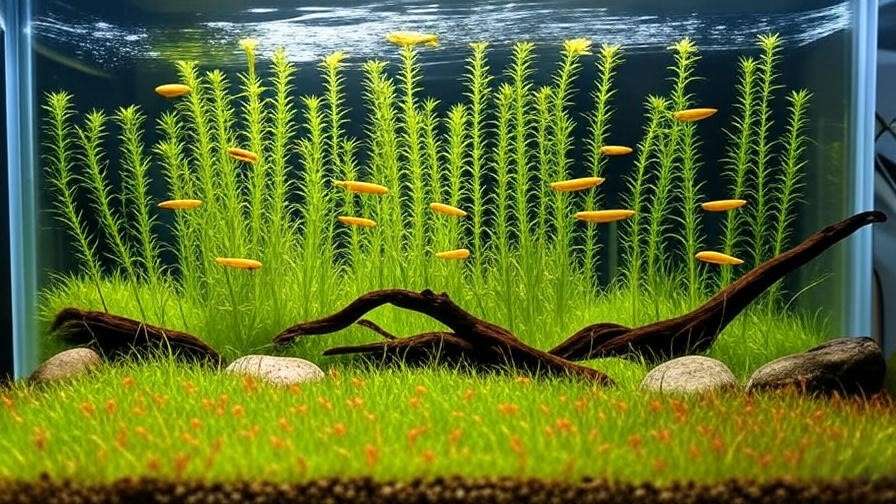
Example: In a 20-gallon tank, place Vallisneria along the back, Java moss on driftwood in the midground, and dwarf hairgrass in the foreground for a balanced, natural look.
Lighting for Visual Appeal
Lighting enhances both tetra colors and plant vibrancy. Use full-spectrum LED lights to highlight the iridescent blues of neon tetras or the fiery orange of ember tetras. A lighting schedule of 8-10 hours daily supports plant growth while preventing algae. Dimmable LEDs allow you to adjust intensity for species like glowlight tetras, which prefer subdued light.
Expert Tip: According to Aquascaping World Magazine, a combination of warm and cool LED tones accentuates tetra colors while promoting healthy plant growth.
FAQs About Tetra Species Fish in Planted Tanks
Q1: What are the easiest tetra species for beginners?
A: Neon, black neon, and lemon tetras are ideal due to their hardiness and tolerance of varied water conditions. They require minimal maintenance and adapt well to planted tanks.
Q2: Can tetras live with only plant-based foods?
A: Tetras thrive on a balanced diet, but plant-based foods like spirulina flakes or blanched vegetables can form a significant portion. Supplement with occasional protein sources like freeze-dried daphnia for optimal health.
Q3: How many tetras should I keep in a 20-gallon tank?
A: A 20-gallon tank can house 12-20 tetras, depending on the species and tank mates. For example, 15 neon tetras with 5 cherry shrimp and 2 nerite snails create a balanced community.
Q4: Which plants are best for a tetra aquarium?
A: Java fern, Anubias, and dwarf hairgrass are low-maintenance and complement tetras’ needs. Amazon swords and Cryptocoryne add variety for larger tanks.
Conclusion
Tetra species fish are the cornerstone of a vibrant, plant-based aquarium, offering aquarists a perfect blend of beauty, ease of care, and sustainability. From the dazzling neon tetra to the bold Congo tetra, these 10 species bring life to planted tanks while harmonizing with eco-conscious values. By following the care tips, tank setup guidelines, and compatibility insights in this guide, you can create a thriving aquarium that showcases both fish and plants. Start your journey today—experiment with Java fern or Amazon swords, join aquarist communities like The Planted Tank for support, and enjoy the rewarding experience of sustainable fishkeeping.

